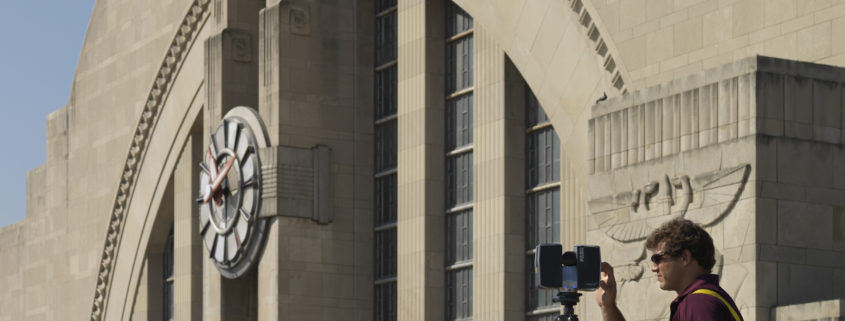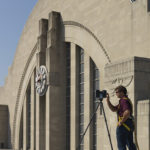Steps in the Reverse Engineering Process
How Does Reverse Engineering Work?
Reverse engineering is the process of analyzing and deconstructing something to see how it works. An example would be taking apart an alarm clock to understand what each piece does – and how the pieces work together.
Let’s say you want to make your own personalized coffee maker. If you have one or more coffee maker you already like, you can reverse engineer them in order to create your design. This could involve taking apart the hardware and examining each piece to understand how it works. At the end of this process, you should have a good idea of what parts you will need to create your own reverse-engineered alarm clock – and the different ways you can assemble it to perform the functions you need.
What Is the Purpose of Reverse Engineering?
By reverse engineering something, you can gain a deeper understanding of how it works. It also allows you to see the original engineering process – and understand how and why it was put together the way it was. This can
- Illuminate flaws in the original design
- Help make repairs or fix existing issues
- Give a better picture of a product you don’t physically have access to
- Create a blueprint for making a similar product
- Assist later forward engineering efforts
Sometimes reverse engineering techniques are used to recreate a product for distribution under another company. It can be used by rival companies and competitors to discover and steal proprietary designs, intellectual property, and information. Due to the sometimes nefarious connotations, it is important to make sure you don’t reverse engineer proprietary designs for financial gain. When in doubt, contact your lawyer or a patent law expert before moving forward with a for-profit project.
What Are the Steps of the Reverse Engineering Process?
The exact process of reverse engineering can vary – but it generally includes some variations of the following steps:
1. Prescreening
First, you must identify what you are going to reverse engineer. This could be a process, a specific hardware component, or an entire software program. No matter what you decide to reverse engineer it is important to understand the exact parameters of your research.
2. Research
This step is particularly important when engineers do not have the original product on hand. Everything from a computer system’s original source code, hardware detailed dimensions, manufacturing processes, or materials used can be incredibly helpful when accurately recreating any reverse-engineered product.
3. Disassembly
This is the key step in which engineers deconstruct the original product. With physical objects this can mean taking each component apart and revealing the inner workings of a device. Engineers dismantling a physical object will generally try to label and store each piece in the order it is removed.
With software reverse engineering, this can mean deconstructing and examining the original source code. With processes, this might include a detailed breakdown of each component. Depending on access to the original product or information collected in step two, there may be some guesswork involved. No matter what, engineers should strive to be as accurate as possible when dismantling the product.
4. Analyze and Evaluate
Once disassembled, each piece or component should be examined. This is a great time to make notes of design change suggestions, as well as document any errors or flaws you notice. All information should be thoroughly documented at this point for posterity.
5. Reassembly
At this point, engineers reconstruct the product in the exact opposite order they disassembled it. It is vital to make sure each piece adds up to the original product. If any pieces are unused and left over, or the final product seems to be missing a piece, you will need to backtrack to ensure accuracy. The reassembled product should produce the original results seen. Achieving an accurately reassembled product confirms that no major components or processes have been missed.
6. Creation
This final step is when engineers can implement design improvements or start work on a new product version. If all previous steps have been executed correctly, engineers should be working with a solid foundation for new engineering efforts. Information gathered during the reverse engineering process should provide a great blueprint for new designs and changes.
Reverse Engineering Examples
Reverse engineering can be applied to physical objects, as well as software products, or even processes. Anything that can be engineered can be reversed engineered.
When software developers don’t have access to original source code, they may need to work backward using the original end product. Software reverse engineering is also incredibly useful when a section of source code from a legacy system is lost. When looking at the end software capabilities they should be able to piece together what code is missing. By reverse engineering, programmers can also spot errors or malicious code and remedy them in new software updates or patches.
Another example where reverse engineering is necessary is when engineers have a discontinued product. They may like the old product but be unable to produce more if the original manufacturer is no longer in business or the design documents have been lost to time. By carefully taking the discontinued item apart, they should be able to recreate the blueprints for building another reverse-engineered, identical model.
Reverse engineering a process is less straightforward, but generally involves mapping the relevant information. Data flow diagrams and structure charts can be utilized to create a breakdown of how an end result is achieved.
3D Engineering Solutions and Reverse Engineering
3D engineering can be an incredibly useful tool for accurate and effective reverse engineering. When trying to reverse engineer a physical object, exact measurements and dimensions can be plugged into 3D engineering programs to reproduce accurate replicas and digital models.
However, often engineers do not have access to exact measurements of every piece. That’s where 3D modeling and computer-aided design become invaluable. A 3D scan can be made of the product, along with each component that the engineers disassemble. This means instead of trying to keep track of each small piece and organize hardware based on the order of removal – a perfectly accurate record has already been made. It also means engineers aren’t forced to rely on manually made measurements and data about the product. Having access to CAD software modeling data gives engineers a huge advantage when creating any type of reverse-engineered hardware.
It can also be a powerful tool when deciding what changes to implement. Having a digital model removes many of the trial and error aspects of reverse engineering efforts before you take it to a CNC machine. Seeing potential upgrades replicated via 3D engineering helps designers create the best possible end product.
What Type of 3D Scan Is Best For Reverse Engineering?
There is no one-size-fits-all scanning solution when it comes to optimizing the reverse engineering process. Each project requires specialized scanning that works with its limitations and unique properties. Thankfully, 3D Engineering Solutions offers a multitude of 3D scanning options. This allows our customers to utilize the very best in 3D modeling technology and CAD drawings for each project.
What Type of 3D Scanning Should I Choose?
Different scanning options complement different project needs and requirements. Our team of experienced engineers is available to help you find the perfect solution for your project. However, there are some general guidelines when it comes to 3D scanning.
- Structured Light Scanning
Structured light scanning using both blue and white light offers high resolution and incredibly detailed results.
- Short Range
Short range 3D laser scanning is ideal for scanning difficult-to-access features and components. An articulated arm with clamp, tripod, vacuum, and other mounting options allows for maximum portability and versatility.
- Confocal White Light
Confocal white light scanning allows you to measure highly specular and transparent surfaces without powder or paint preparation.
- Long Range
Long range 3D laser scanning is the superior option for reverse engineering any large object.
- Industrial CT
Industrial CT scanning is the industry gold standard. It allows access to hidden areas as well as inside base materials. You will be able to see porosity, delaminations, inclusions, and other defects.



Leave a Reply
Want to join the discussion?Feel free to contribute!